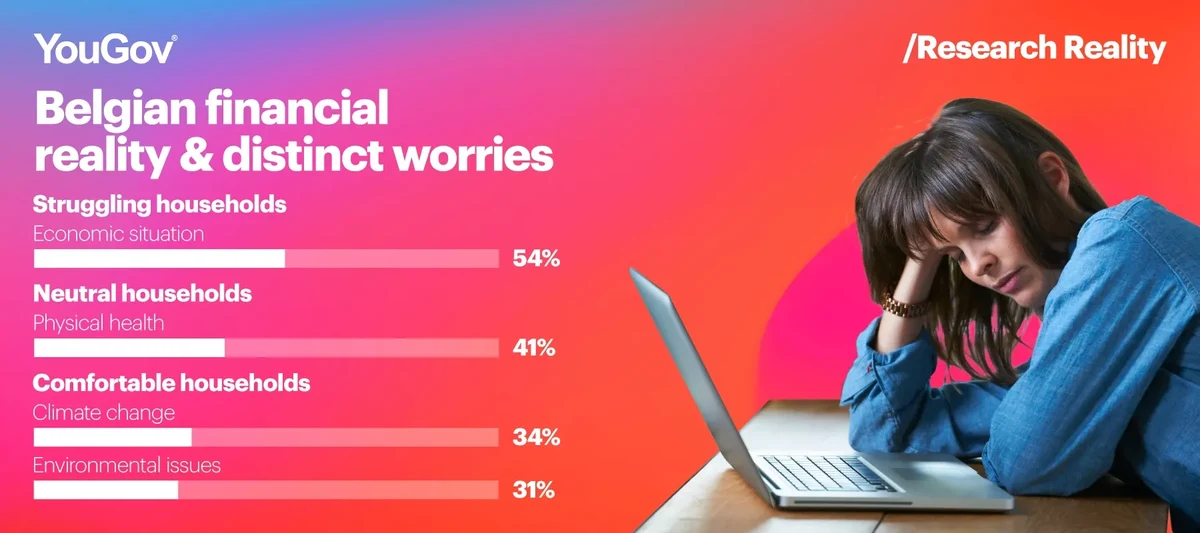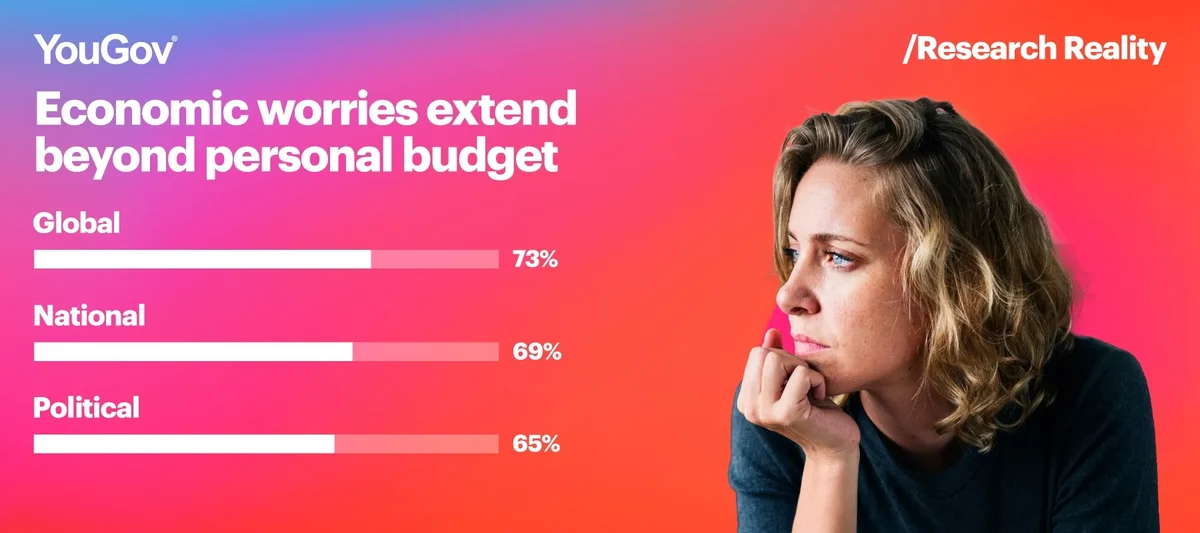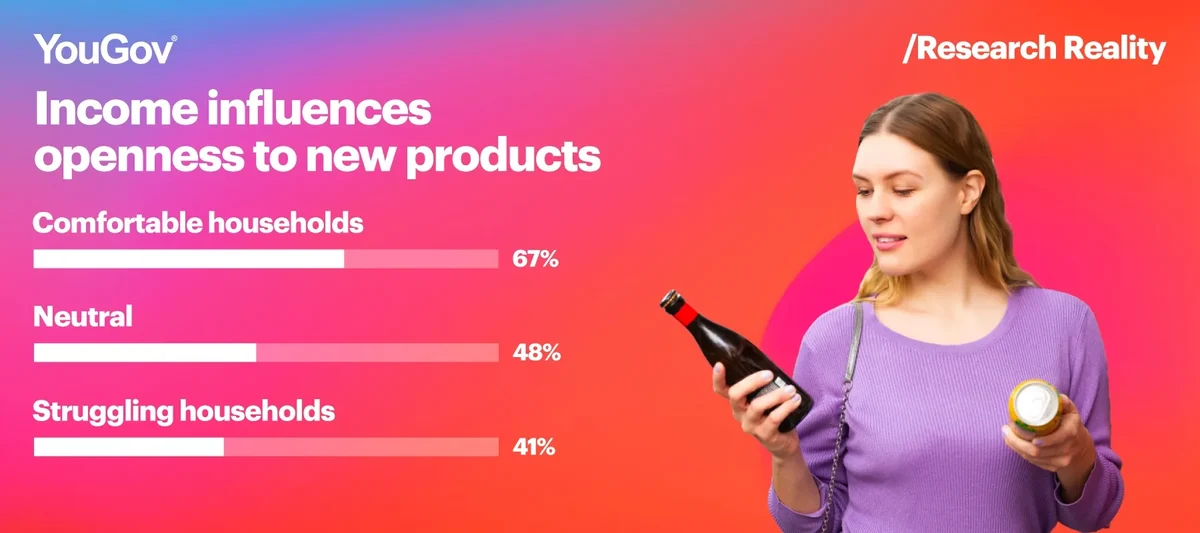How financial reality influences Belgian FMCG consumers
Consumers don’t make choices in a vacuum – especially not in today’s economic climate. In Belgium, household financial situations shape not only what people buy, but also why they buy it.
Budget stress versus broader concerns
Everyday purchasing decisions are strongly influenced by what households can afford and what matters most to them. Struggling households primarily focus on price, with budget-friendly options (47%) as their default, while more financially stable consumers prioritize product quality (Comfortable: 40%, Neutral: 35%). Despite these differences, all income groups share a strong preference for buying local products as impactful actions to undertake when companies raise their prices unfairly (Struggling: 36%, Neutral: 40%, Comfortable: 43%).
These financial realities correspond with distinct worries: lower-income groups are concerned about their economic situation (54%), neutrals emphasize physical health (41%), and wealthier households focus on climate change (34%) and environmental issues (31%). This suggests that with increasing income, consumers move beyond budgetary concerns to give greater importance to broader personal and societal values.

From wallet worries to wider political concerns and actions
Moreover, for struggling households, economic worries extend beyond personal budgets. Political concerns are significantly higher among this group, with worries about global (73%), European (69%), and national (65%) political developments adding to their anxiety. The perceived impact of these issues feels more immediate when financial security is fragile.

Balancing budget and beliefs: when values meet financial reality
Lower-income households are generally more cautious and price-driven in their purchasing behavior, which is also evident in their lower willingness to try new products: just 41% of Struggling households, compared to 48% of Neutral and 67% of Comfortable households. This trend continues across most lifestyle intentions: their willingness to reduce meat consumption (34%), adopt a planetary health diet (38%), or even go fully vegan (20%) is typically lower than that of higher-income groups.

Yet, struggling households stand out in two areas: their commitment to the zero-waste challenge is at a similar level as the other groups (78% vs. 75% and 79%), and their willingness to pay the “true price” for products that reflect social and environmental costs is also on par (49% vs. 50% and 55%). Thus, despite limited financial flexibility, this group shows that concern for sustainability and fairness can still translate into meaningful action – especially when aligned with clear, tangible values.
What this means for brands and retailers
- Affordability matters – but values still resonate
While price remains the primary concern for lower-income households, many still support sustainable initiatives like true pricing and zero-waste – when they feel tangible and fair. - Financial comfort shapes priorities
As income rises, consumers move from basic budget concerns to broader priorities like product quality, health, and sustainability – indicating a shift from necessity to values-based consumption. - Local and fair practices build universal trust
Across all income groups, buying local is seen as a powerful response to unfair pricing, highlighting shared expectations for transparency and fairness from brands.
Want to know what's really driving shoppers in Belgium right now?
Discover what truly motivates today's Belgian shoppers in our latest report: Behavior Change Spring 2025 – The power of choice: Shopper perspectives in times of turmoil and uncover key insights to help you better connect with today's values-driven consumer.
